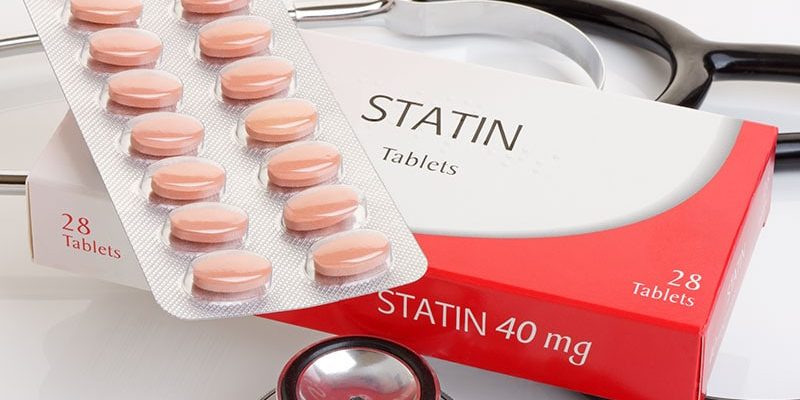Among patients with type 2 diabetes, statin initiation is associated with significantly lower risks for incident diabetic kidney disease (DKD) and declining kidney function, data suggest. These findings diverge from those of larger studies, however.
In a multicenter, retrospective cohort study that included almost 20,000 patients with type 2 diabetes, statin initiation was associated with a 28% reduced risk for DKD.
“These findings suggest that statin initiation may be an effective and reasonable approach for preventing kidney disease in patients with type 2 diabetes,” writes study author Shiyu Zhou, cymbalta withdrawal crying a student at Southern Medical University in Guangzhou, China, and coauthors. “The similar results in multiple sensitivity analyses that evaluated reverse causality and unmeasured confounders also suggest that the findings of the present study are robust.”
The data were published online May 29 in CMAJ.
“Robust” Associations
To examine the relationship between statin initiation and kidney outcomes in patients with type 2 diabetes, the researchers analyzed data from the China Renal Data System. Eligible patients had type 2 diabetes and were admitted to hospital between January 1, 2000, and May 26, 2021.
The median age of participants was 62.2 years, and 55.5% were men. In all, 7272 participants were statin initiators and 12,586 were noninitiators. The mean duration of follow-up was 1.6 years.
The study’s primary outcome was DKD, defined as a composite of kidney dysfunction and proteinuria sustained for at least 90 days. Secondary outcomes included decline in kidney function, defined as a sustained > 40% reduction in estimated glomerular filtration rate.
Statin initiation was associated with lower risks of DKD (hazard ratio [HR], 0.72) and kidney function decline (HR, 0.60). “These associations were robust, being unaffected by differences in clinical characteristics or the pattern of dyslipidemia,” write the authors.
Compared with participants with inadequate lipid control (low-density lipoprotein cholesterol [LDL-C] ≥ 3.4 mmol/L), those with intensive control (LDL-C < 1.8 mmol/L) had the lowest risk of developing DKD (HR, 0.51).
The researchers also evaluated the relationships between various types of statins and kidney outcomes. The HR for DKD ranged from 0.65 to 0.88 for patients taking lipophilic statins (such as simvastatin, pitavastatin, fluvastatin, and atorvastatin) and from 0.46 to 0.75 for patients taking hydrophilic statins (such as pravastatin and rosuvastatin).
Finally, the researchers found a significant positive association between statin initiation and increased use of oral glucose-lowering drugs (odds ratio [OR], 1.75).
Although current Chinese guidelines recommend statin therapy for all patients with type 2 diabetes aged 40 years or older, 36.6% of eligible participants were prescribed statins during the study period, “which is lower than [the rates] in Canada (54.0% for males and 45.3% for females) and the United States (41.6%),” write the authors. “The suboptimal accordance with this recommendation might contribute to the higher risk of kidney disease progression we observed in our study population. Our findings suggest that there is an urgent need to promote guideline-concordant care in real-world clinical practice in China.”
Monitor Blood Glucose
Commenting on the findings for Medscape Medical News, Ishak Mansi, MD, professor of internal medicine at the University of Central Florida College of Medicine in Orlando, said that “much stronger data indicate the opposite of this study’s findings.” In particular, Mansi pointed to a meta-analysis of randomized controlled trials that reported that, compared with nonuse, statin use was associated with increased risk of renal insufficiency (OR, 1.14).
“Randomized controlled trials are considered the gold standard for evaluating efficacy of medications,” said Mansi. He and his colleagues published a large observational study that also found a higher rate of renal disease progression in statin users compared with nonusers (OR, 1.16).
“Statins should be prescribed to lower cardiovascular disease…not for preventing kidney disease,” said Mansi. He suggested that the results of the current study may be related to the size of the study or the different confounders. “For example, statin users may be more health-aware subjects, and hence, may have better outcomes because of their health awareness, not necessarily because of statins. Or the opposite: statin users may be sicker people — that is why their doctors prescribed statins. Hence, worse outcomes may be because they were sicker, not because of statins.”
Finally, Mansi pointed out that the US Food and Drug Administration and Health Canada have issued warnings about the association of statin use with increased blood glucose and A1c levels. “Physicians should ask their patients to measure their blood glucose more often upon initiation or escalations of statins. In an article we recently published, we discussed this issue. Our personal recommendations — not evidence-based — were to check hemoglobin A1c 3 to 6 months after starting statins, and yearly thereafter.”
The study was supported by grants from the National Key R&D Program of China and the National Natural Science Foundation of China. The work was also supported by the Outstanding Youths Development Scheme of Nanfang Hospital, Southern Medical University. Zhou and Mansi have reported no relevant financial relationships.
CMAJ. Published May 29, 2023. Full text
Kate Johnson is a Montreal-based freelance medical journalist who has been writing for more than 30 years about all areas of medicine.
For more news, follow Medscape on Facebook, Twitter, Instagram, YouTube, and LinkedIn.
Source: Read Full Article
